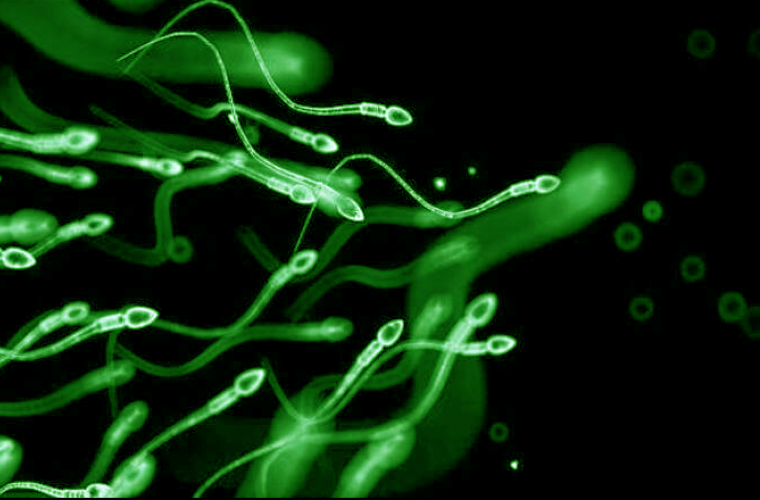Drug that banishes baldness ruins men’s love lives – leaving them IMPOTENT
Gemma Mullin, Digital Health Reporter
* This article is a repost which originally appeared on THE SUN
A DRUG given to men to help halt their baldness is reportedly ruining their love lives – by leaving them impotent.
Finasteride, sold under the brand name Propecia, is one of the most commonly used treatments for male pattern baldness.
Multiple studies have found it improves hair growth within months, with the effects lasting as long as the medication is taken.
But a growing number of British men say it’s caused them persistent side-effects, including sexual dysfunction, infertility, depression and anxiety.
Some claim the drug’s potential side-effects last even after they stop taking it.
Hair loss can be caused when high levels of the male sex hormone dihydrotestosterone (DHT) shrinks follicles on the scalp.
Stops hair loss
Finasteride works by preventing testosterone converting into DHT – and not only stops hair loss, but has been shown to encourage regrowth.
But reducing levels of DHT can also shrink the prostate – the male gland surrounding the urethra which can sometimes become swollen enlarged.
This is why it’s also available in a higher dose – 5mg rather than 1mg for hair loss – as a treatment for enlarged prostates.
However interfering with DHT’s production has been found to cause some men difficulties achieving an erection, a lack of libido and reduced semen.
Other less frequent problems include infertility, testicular pain and anxiety.
Drug manufacturer Merck says up to one in 100 people is affected by sexual dysfunction and in the US, its paid out more than £3million to hundreds of men who have claimed the side-effects lasted long after they quit Propecia.
An online support group called Propecia Help says it has 5,000 members and men from around the world are joining at the rate of 100 a month.
Ryan Clark from North Shields, North Tyneside, who took the hair loss drug finasteride for 18 years and claims he has suffered a range of side-effects including sexual dysfunction and infertility
Ryan Clark, 52, came across the page after desperately searching his symptoms online.
The operations manager, from North Tyneside, was taking finasteride on and off for 18 years to treat a bald spot on his crown.
His GP prescribed the drug privately and he began paying £30 a month for the daily pill.
He told the Daily Mail: “In terms of treating my hair loss, the drug worked brilliantly and the gaps on my crown filled in within three months.
“However, within weeks I lost interest in sex and my libido didn’t return. I didn’t connect it with finasteride as this side-effect was never mentioned.”
Ryan said that within three months he started to feel anxious and suffer insomnia.
“Within weeks I lost interest in sex and my libido didn’t return”
-Ryan Clark
He went back to his doctor “multiple times” about his various health problems and says each one was treated individually.
In 2010, while trying for a baby with wife Lyndsey, 42, tests revealed he had poor-quality sperm with low mobility and told it was unlikely they’d conceive naturally.
So they turned to IVF to have their son Joshua, now six.
Finding help
Two years ago, Ryan looked up his symptoms online and came across post-finasteride syndrome (PFS) and says “everything clicked into place”.
It listed a collection of symptoms – sexual dysfunction, infertility, anxiety and depression – which persist long after finasteride is discontinued.
By this point, Ryan hadn’t been taking the drug for at least two years and says none of the symptoms had gone away.
In fact, he says he has developed neuropathy – or nerve damage causing pins and needles – in his hands and feet.
What is male pattern baldness?
Male pattern hair loss (MPHL) is the most common type of hair loss in men.
It is also known as androgenetic alopecia and affects about half of men over the age of 50.
It is caused by a combination of genetic and hormonal factors. A hormone called dihydrotestosterone (DHT) causes a change in the hair
follicles on the scalp.
The hairs produced by the affected follicles become progressively smaller in diameter, shorter in length and lighter in colour until eventually the follicles shrink completely and stop producing hair.
It’s believed to be a hereditary condition, inherited from either or both parents.
The usual pattern of hair loss is a receding frontal hairline and loss of hair from the top of the head.
Hairs in the affected areas are initially smaller in diameter, and shorter compared to hairs in unaffected areas, before they become absent.
The diagnosis is usually based on the history of scalp hair loss on the front/ top of the head or receding hairline, the pattern of hair loss and a family history of similar hair loss.
As of yet, there’s no cure but there are various treatments including topical and oral medication, as well as surgery which can be sought privately.
Source: British Association of Dermatologists
Experts say the potential side-effects, and the fact they can be long-lasting, should be made clearer to patients.
In particular the threat to fertility should be stressed to younger men, says Allan Pacey, a professor of andrology at the University of Sheffield.
While one doctor has called for better education amongst his colleagues.
Dr David Edwards, a GP in Chipping Norton and past president of the British Society for Sexual Medicine, said: “If you asked the average practice nurse, pharmacist or GP about this, I don’t think they would know about the risk of side-effects such as sex problems and depression.”
Merck has defended Propecia’s safety record and says it’s been subject to extensive clinical trials.
A spokesperson added: “We continuously monitor the safety profile and update the safety information which is included in both the summary of product characteristics (intended to inform health professionals) and the patient information leaflet (or ‘packet insert’, intended for patients).
“The potential for erectile dysfunction and depression to occur as an adverse reaction with finasteride treatment, although uncommon, is documented in both the Summary of Product Characteristics and the Patient Information Leaflet.
“Anxiety is another potential side effect which is listed.”










